The keys to success with commercial real estate cold calling
The ultimate guide on how to win more business from commercial property owners through cold calling.

Whether you are uncovering new listing opportunities, attempting to find active buyers, or narrowing in on potential new acquisitions, prospecting is the lifeblood of winning new business in commercial real estate.
Commercial real estate cold calling
Traditionally, cold calling was the most powerful way to connect with new potential clients. The rise of other digital, more refined means of outreach, however, has led to increasing difficulty to find success with cold calling. Despite that, the foundation of commercial real estate prospecting has remained over the phone. So, in the face of these challenges, we’ll explore how you can continue to improve your cold calling and get directly in touch with property owners.
Is commercial real estate cold calling dead?
One argument consistently made is that cold calling is on the way out, if not already dead. People that make this argument compare cold calling against other channels, citing the importance of digital reputation in the decision-making process, while pointing to the level of heightened personalization available digitally. There is some research to back this argument up, as well. A Keller Center Research Report from Baylor University analyzed more than 6,000 real estate cold calls and concluded that only 28% were answered, with just 1% converting to appointments.
Digging into the study deeper, however, shows findings that support the fact that cold calling still has value. The report also concluded that for every 209 calls, one appointment was set. Accounting for the time taken for bad and good calls, the estimated time needed to secure one appointment was 7 hours. In a rough ROI sketch for residential brokers, with a 2:1 appointment to listing ratio, the study concluded that they would be working at $387.7 per hour. While the study doesn’t account for calling fatigue and the randomness of leads, it can serve as a baseline for the value of cold calling in its most isolated form.
For commercial brokers, the estimated ROI numbers on this are going to be substantially different—and should be even greater.
So what does this mean for commercial brokers?
On the most basic level, cold calling is not dead, and value can most definitely be found by calling. Cold calling efforts simply need to be part of a bigger mix of outreach. The true debate lies in how valuable cold calling actually is, and how you can best optimize the process to make sure it is still worthwhile.
In CRE, by targeting the right properties and reaching out to the right owners with a tailored script, you can assure that you’re squeezing the most value out of your cold calling. Here, we’ll show you how you can do that.
Finding property owners and their contact info
Who you spend your time calling remains one of the most important factors for cold call success. In the previously mentioned example, the cold calling recipients were a random set of people. Additionally, many real estate cold callers end up working similar sets of leads—often including FSBO or expire-listing leads. By finding targeted leads to call, you are not only decreasing wasted time on irrelevant leads, but equipping yourself with the ability to develop a more engaging pitch.
By tailoring your message to the interests and behaviors of specific owners, you can increase your response rates and the rate at which you set appointments.
With the Reonomy Platform, you are able to achieve this by running targeted searches specific to your needs. The search returns a list of relevant leads, and the option to access contact information for any property on your list. Below are some examples of popular filters and searches among commercial real estate brokers.
Finding in-market and asset type leads
The first step in making any property owner search more relevant is ensuring that the asset they own fits into your focus domain. This includes filtering for both the location and type of asset they own.
Search by Address or by Market
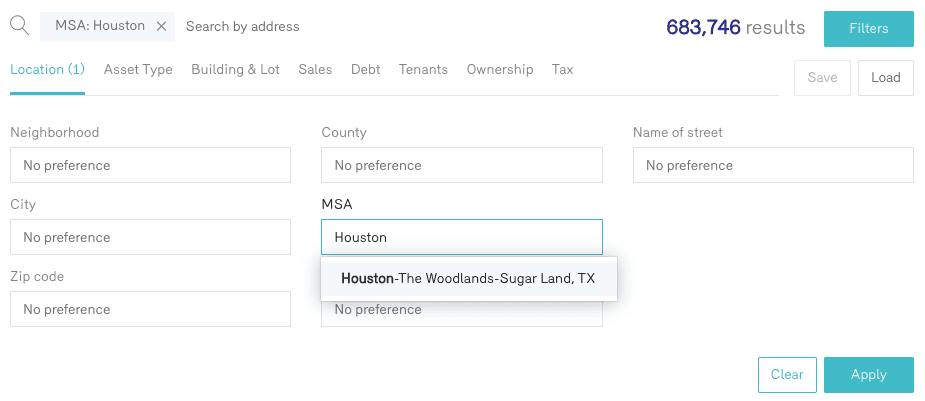
Search for Specific Property Types
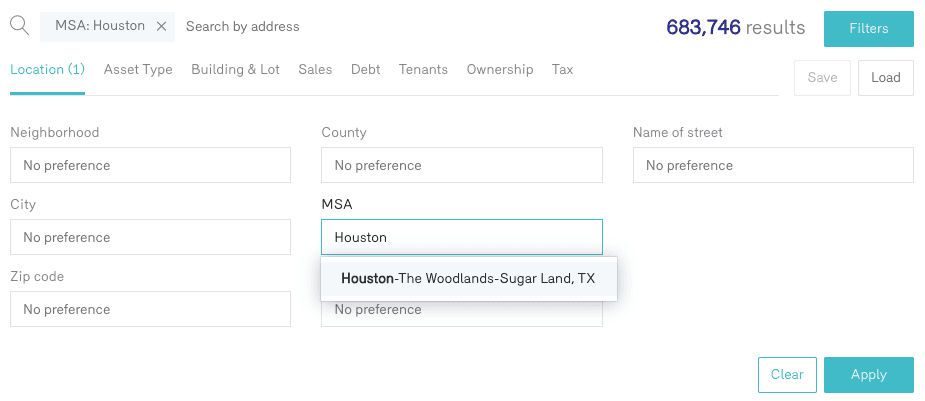
Finding seller leads
If you’re a sales broker, finding prospects actively looking to sell is an ongoing battle, especially when searching off-market. In the Reonomy Platform, there are several prospecting searches to find leads that are likely to list in the near future—including filters for property sales history. These should be applied in combination with the property type and geographic searches mentioned above. One option is searching for properties that have not sold in the last 10 years. The average holding period of a commercial property is 10 years. If a property hasn’t sold in that period, it’s more likely to sell than one that has.
You can search properties based on if they have or have not sold in any historical time range
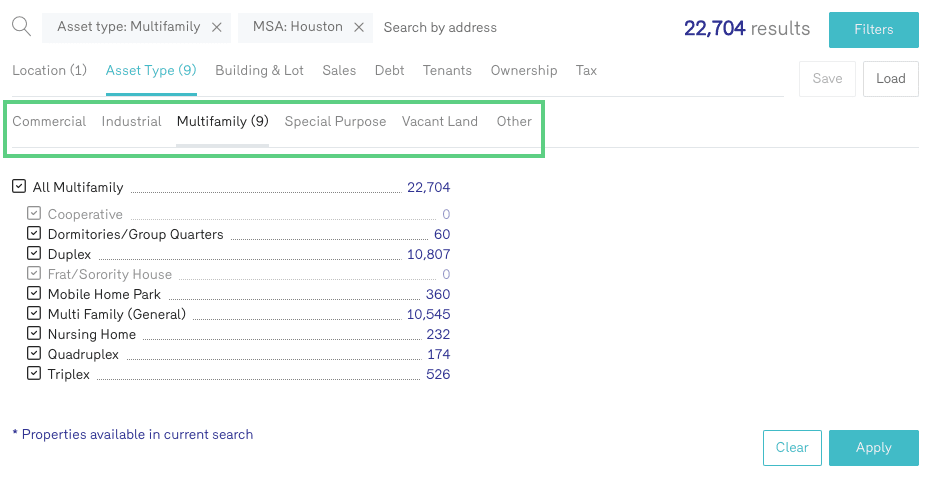
From there, you can add additional filters for sale price, multi-parcel sales, and so on.
Finding buyer leads
On the other hand, if you have a range of properties that you are looking to find buyers for, you can run slightly different searches. There are several ways that this can be achieved in the Reonomy Platform. The first way is to search for recent sellers. The idea here is that recent sellers have cash on hand and the potential to invest their cash elsewhere.
Using the same filter as above, you can instead search for properties that have been sold in the recent past.
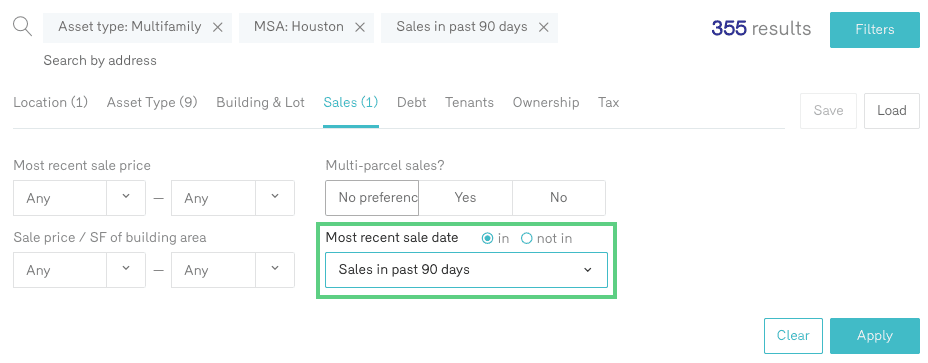
The second way to find buyer leads is to search for recent buyers. Here, Reonomy users are looking at investors making purchases with the potential to make further acquisitions. You can try any of the example searches above yourself within the Reonomy web app to tailor your search based on who you determine to be the best person or property to call.
Once you’ve determined the ideal properties and owners to connect with, you can quickly dive in and access owner contact information in Reonomy, including the ability to pierce the LLC and see contact details for individuals.
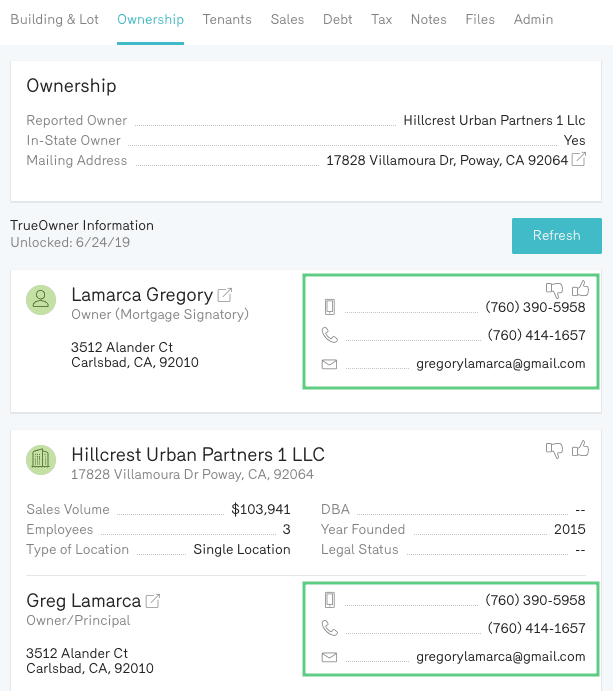
Real estate cold calling lists
You can generate a list of property owners from any Reonomy search. That means that you can get many targeted prospects from a single search, without having to run a new search for every call. Your list can be exported straight from Reonomy as a CSV file.
This enables a systematic approach when making contact. If you use an internal CRM tool, this CSV file can be imported into it with ease. Many brokers discuss the importance of having discipline in order to find success with cold calling. By using a list, you can keep your approach grounded and structured, while prioritizing the warmest prospects. Cold calling lists are also important because they allow you to scale your outreach efforts, even if across a team of agents.
Commercial real estate cold calling scripts
Cold calling scripts remain a popular asset for any individuals involved in regular calling. With tools like Reonomy, scripts become increasingly in-depth as you are equipped with information that allows you to tailor your call. By being relevant and engaging, you forgo the need to rely on preset tag-lines and phrases.
How does Reonomy help you tailor a cold calling pitch?
The first way Reonomy helps you tailor your pitch is by providing information about the building that your call recipient has under ownership. Reonomy gives you building data such as the lot size, year renovated, year built and the zoning area. Any of these can generate talking points for you to lead with.
Example questions could include:
“I see you did a renovation in [2023] have you thought about how much value that could add to your property at sale?”
“Your property is in [zoning X], there are a number of developers interested in doing [type of development] in this zone, have you thought about testing that interest in your property?”
Reonomy also supplies sales and debt history on each property. Both of these give you greater insight into the intent of the owner you are calling for further talking points. The sales history highlights what the current owner paid for the property. In knowing this, you can make better judgments on the price they would expect now if selling.
An example question here could be:
“When you purchased this property in 2002, what were your thoughts about how long you would keep it?”
The second tool you can leverage to warm up your conversations is an ownership portfolio search. You can search the lead that you have found through your search and explore the other assets they have under their ownership. There are ample ways this could enable your call to be tailored. When calling prospective buyers, understanding their entire portfolio could help you build the case of why a certain property should be considered a worthwhile addition to their portfolio.
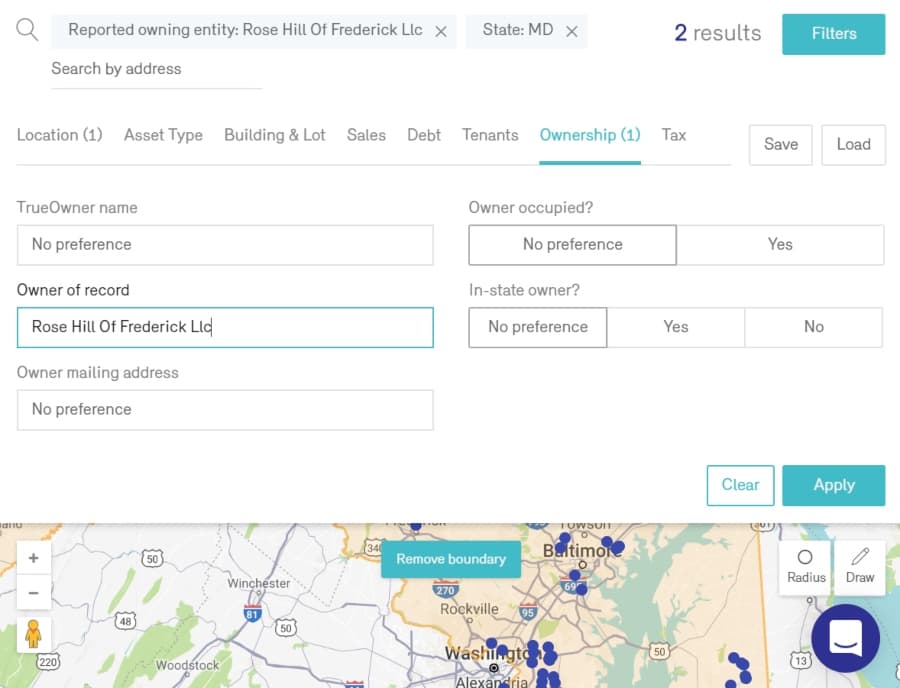
Beyond tools like Reonomy, general research on your prospect will help develop depth and understanding for your conversation. Research could be as simple as searching their social media channels and a quick Google search. Having this information or trying to tailor your pitch does not prevent you from using cold calling scripts.
Cold calling scripts from leading CRE professionals
Bob Barron breaks his cold calling script down, in what he calls the anatomy of a call. He explains that it starts with a well-prepared opening statement or an initial benefit statement. Following this, he argues you should have a targeted follow question, one that doesn’t have a yes or no answer but rather gets the caller talking and conversational. The third part of the call he labels the value for free section. This section is about providing something of value for taking your call, this could include a market report or comparables on similar properties sold.
The final part is closing for the meeting where he outlines some different scripts. John Higman outlines that his script is focused on generating meetings. His first step involves covering interest assessment – scripting questions that uncover whether or not the person is interested in commercial real estate or the specific reason for your call. The progression from this is to property needs assessment. Here the caller is trying to identify if there is a relevant property need of the person on the other end. The final point is setting up a meeting. James Kim follows a much more structured script than the two above. He consolidates his script into three main points – be brief, conversational and more interested than interesting.
We’ve included his script below:
“Hi [NAME], this is [YOUR NAME] I’m with [YOUR COMMERCIAL REAL ESTATE COMPANY], we’re a commercial real estate firm in [YOUR CITY].
I know I’m calling you out of the blue here, but do you have 1 minute to help me out? [PAUSE]
Great, we’re selling/leasing a number of commercial [RETAIL, INDUSTRIAL, OFFICE, MULTIFAMILY, VACANT LAND] properties near you and I was wondering if you might know anybody looking to expand into new locations?
[IF YES]
Great, I can send over more info. What’s your best email address? (Get email address then send over more info after hanging up.)
Oh by the way…just curious…how’s your building working for you? Are you happy where you are…or would you be open to expanding into new locations?
[IF NO]
Oh ok, no problem, it was just a stab in the dark.
Oh by the way…just curious…how’s your building working for you? Are you happy where you are…or would you be open to expanding into new locations?
[CLOSE]
Hey, I’ll let you get back to it, [NAME], I appreciate your taking the time to rap with me.
Just so you know, I’ll be in your neighborhood next week checking out some other properties in the area. I could pop by for a few minutes to introduce myself and you can put a face to the name.
How does [DAY] at [TIME] look on your calendar?
Great, see you then, I’ll call that morning just to confirm. Thanks, bye.”
While there might not be one magic cold calling script, aspects of the above can assist you in developing a framework that works for you.
Commercial real estate cold calling techniques
So far we’ve covered a range of tips and techniques that you can leverage for your advantage. This included making your call as relevant as possible to the recipient, having a strong needs assessment/qualification and leaving with a clear ask or progression from the conversation. In addition, there are a number of areas where you can make optimizations to improve your cold calling success.
Always leave a voicemail
80% of calls go to voicemail, therefore strong consideration should be given to a scripted or planned voicemail. The optimal voicemail is between 8 and 14 seconds. With so many calls going to voicemail, being prepared to leave multiple voicemails should also be considered. This is especially important considering 90% of first voicemails are never returned.
How many calls should you make?
The number of calls spent trying to reach a prospect before removing as a lead is an oft-debated point. One general agreement is that the average caller gives up after too few attempts. In 2007 it took an average of 3.68 cold call attempts to reach a prospect and in 2013 it took 8 attempts. Some sources, i.e. Hubspot, even state that it takes as many as 18 calls to truly connect with a buyer (though not specific to CRE). In spite of this, the average salesperson only makes 2 attempts to reach a prospect. The takeaway here is ensuring you are making enough attempts to reach your prospect.
What’s the best time of day to call?
Another point of contention is when best to make calls. The Keller Williams study suggested that the best time of day was to call between 10 a.m. and 2 p.m. and the least effective time was 5 p.m. As with any time of day recommendations, variation in the best times can depend on the lead you are targeting. These optimizations and many of the points in this article are but a few ways to improve the success of your cold calling in commercial real estate. Points not touched on include who is making your calls, how to structure your calling process and how to combine calling with other channels like text and email.
Regardless, a unifying factor among all cold calling professionals is a need for continuous improvement and optimizations.
Author

Reonomy
Resources team
Author

Reonomy
Resources team




